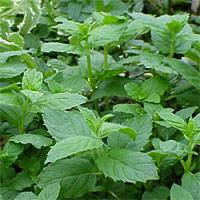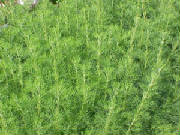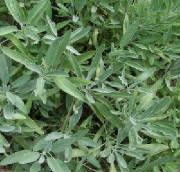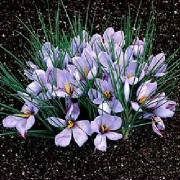|
|
 |
|
The following excerpt is taken from William N. White's
Gardening for the South; or the Kitchen and Fruit Garden, pp.286-299.
|
 |
|
Spearmint

It is employed in sauces and salads, as well as
dried for soups in winter. A few sprigs of mint boiled a little time with them, and then withdrawn, are though by some
to improve the flavor of green peas. it is also used in preparing mint-julep. Its medicinal properties are aromatic,
stimulant, and stomachic. The leaves boiled in milk are useful in diarrhoea. Its infusion is good to prevent nausea.
|
 |
Southernwood

Is very nearly allied to the above, both being species
of the same genus, and similar as to medical properties. Like wormwood, it has a grateful odor, but it is not much used
in medicine from its nauseous taste. It is a stimulant, vermifuge, and emmenagogue.
|
 |
 |
 |
|
Sage

It has been cultivated from the earliest times,
was classed among the heroic remedies, and considered the best of medicines for prolonging human life. It has a fragrant
smell, and a warm bitterish aromatic taste. The leaves are used for seasoning stuffings, sauces, and many kinds of meat,
as well as to improve the flavor of various other articles of cookery. Medicinally its infusion is given warm as a sudorific,
or mingled with vinegar and alum is an excellent gargle in sore throat.
[Thomas Stuart McFarland, a farmer near Belgrade, Newton
County, in southeast Texas, reported that he had sage in his garden as of April 16, 1840.]
|
|
 |
 |
 |
|
Saffron

Saffron is the dried stigmas of crocus sativus flowers,
The stigmas were thought to cure many illnesses and also had the capability of making strong dye.
Saffron is not included in Gardening for the South;
however, Thomas Stuart McFarland, a farmer near Belgrade, Newton County, in southeast Texas, reported that he had saffron
in his garden as of April 18, 1839.
|
|
|
|
|
|
 |

